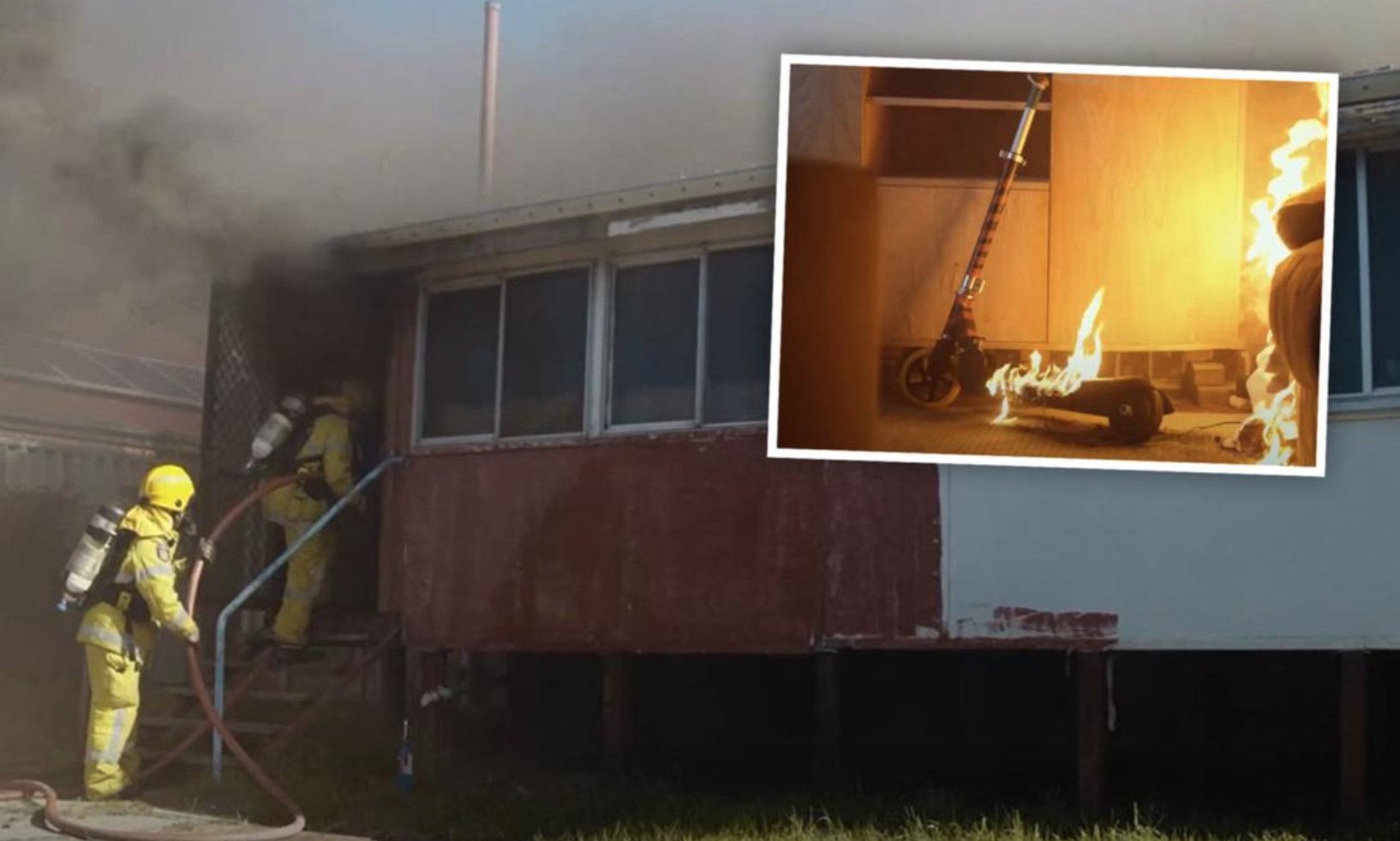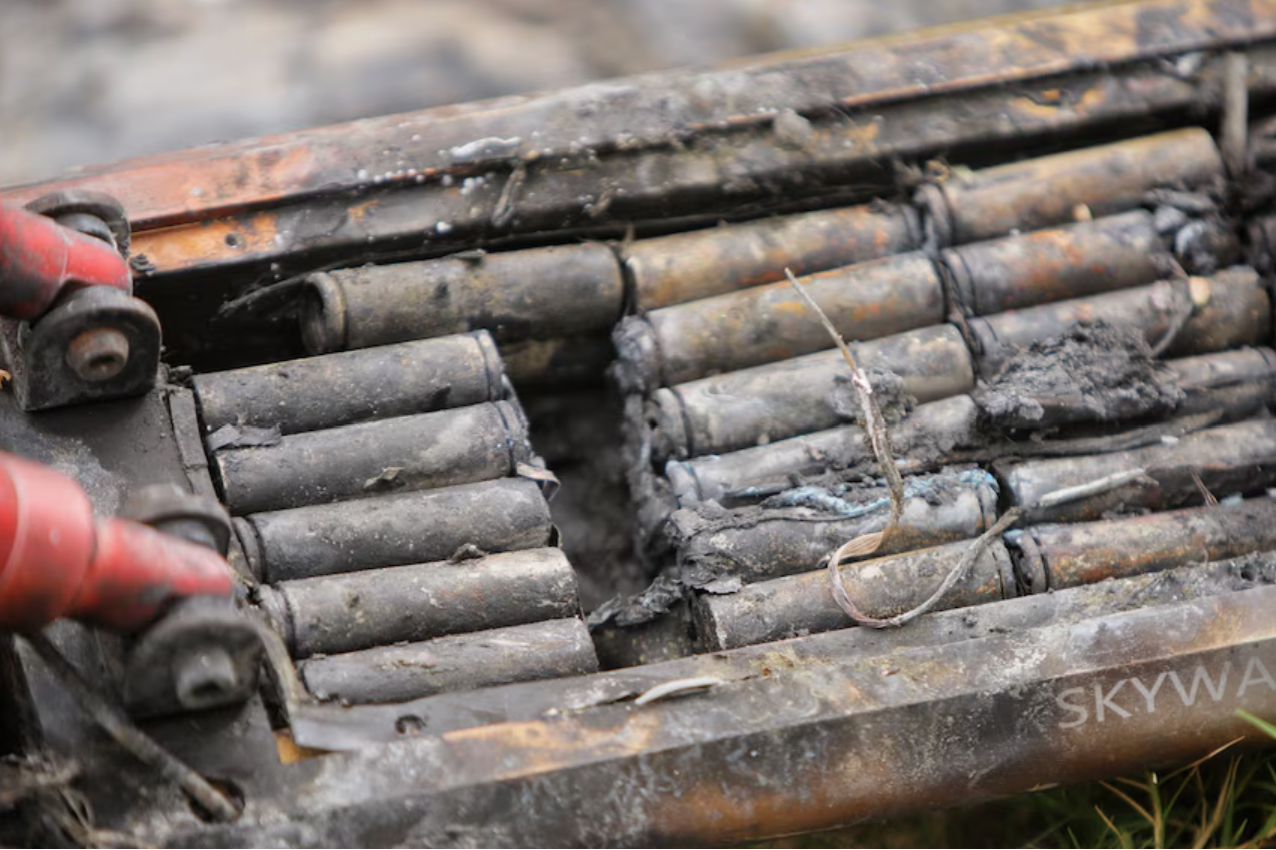Does insurance cover a lithium-ion battery fire? Maybe and probably not

If you have a Lithium-ion battery fire, does your home and contents fire insurance cover it? We have attempted to find simple English answers – yes or no – but at best, all we get is a maybe.
The average home now is littered with rechargeable lithium-ion powered devices. Laptops, phones, tablets, headphones, torches, toys, vacuums, power tools, e-scooters, e-bikes, EVs, solar batteries and even vapes! Earlier this year, we wrote that Large-capacity Lithium-ion batteries will end in death. It attracted much reader interest, and one of the most asked questions was about insurance coverage.

So, let’s start at the root of the issue. No one knows for sure what is and what is not covered. There are insufficient Australian statistics to develop a risk profile that insurers can use to develop policies and set premiums. All they can say is that certain Lithium-ion devices won’t be covered for home and contents fire protection or it will be a case-by-case decision and a very much higher premium.
In December 2022, the ACCC declared Lithium-ion batteries a product safety priority for 2023 and issued a discussion paper. The most interesting fact is that Lithium-ion batteries, particularly those using Lithium Cobalt Oxide (most) and Lithium Aluminium Oxide, had the lowest thermal stability and highest thermal runaway risk. CyberShack will not review larger-capacity Lithium-Ion devices.
Lithium iron phosphate (LFP or LiFePO4) had the highest stability and lowest thermal runaway risk. Remember, when buying a rechargeable battery-powered device, the more expensive LiFePO4 have no reported issues. CyberShack will happily review larger devices using these.
The first step is to identify battery types with different risk profiles.
| Type | Tolerance High is good | Use |
| Lithium-sulphur | Very high | Not widely commercially available |
| Lithium iron phosphate (LFP or LiFePO4) | Very high (270°C) | Household appliances and power tools Personal transportation devices e-vehicles Renewable energy storage systems |
| Lithium titanate | Very high | e-vehicles Renewable energy storage systems |
| Lithium manganese oxide (LMO) | High (250°C) | Household appliances and power tools Personal devices e-vehicles |
| Lithium nickel manganese cobalt oxide (LMC) | Moderate (210°C) | Personal devices like laptops (flat shape) e-vehicles Renewable energy storage systems. |
| LCO aluminium oxide | Low (150°C) | Household appliances and power tools e-vehicles |
| Lithium cobalt oxide (LCO) | Low (150°C) | Personal devices |
| Lithium polymer with LFP, LMO, LMC or LCO cathode | Varied | Personal devices like laptops (flat shape) e-vehicles Renewable energy storage systems |
Lithium-ion battery fire risk causes
- Cheap batteries (trading safety off for cost reductions) and chargers (not regulated by RNZ-C-Tick) with inadequate heat sinks or battery management systems.
- Charging, especially using a third-party charger.
- Extremes of heat, cold or moisture.
- Physical damage makes all Lithium-ion batteries a risk but puts EVs and personal transport devices into the higher risk category due to crashes.
The ACCC has released its long-awaited report on Lithium-ion battery safety. We will analyse that soon.

Back to Insurance
The Insurance Council of Australia did not submit to the ACCC due to the limited scope of the discussion paper and the fact that its members were best equipped to manage the risks. It did say that it backed measures to reduce fire danger from Lithium-Ion batteries.
The major insurers are unwilling to comment beyond what is in their current product disclosure statements (PDS). PDS can be changed at renewal time. You may find future renewals costing much more if you use at-risk Lithium-ion devices.
A major broker (name withheld) said loopholes in PDS usually worked in favour of the insurance companies, not the consumer. The most common loophole was the clause to take every precaution to reduce the insurance company’s exposure to risk. Lithium-ion batteries are a known high-risk.
The key issue is the need for insurance companies to develop a Lithium-ion device risk profile to calculate premiums coverage and exclusions. Generally, the broker expects larger lithium-ion devices will cost more to insure (if you can get insurance). Part of the risk profile includes specifying due diligence (supervision during charging) and how and where they are charged.
Several potential PDS issues relate to lithium-ion battery fire
- The Fire Department usually prepares a fire incident report. It may reveal the use of third-party chargers, frayed leads, charging inside, especially in proximity to flammable materials like bed linen, lack of proper attention (charging unattended) and negligence. Any of these can give an insurance company a reason not to pay.
- Non-disclosure of using Lithium-Ion powered devices does not yet void fire cover. Future PDS will likely require the declaration of anything over a large laptop.
- Using a third-party charger will void insurance as you must follow manufacturers’ recommendations.
- Charging inside. Currently, nothing is stopping you from charging a Lithium-Ion device inside unless its location is deemed negligent (charging on or near flammable materials). This is one of the first changes you will see in new PDS.
- Charging in garages, under the house or outside. This should be covered if the locations are deemed suitable (within the manufacturer’s recommendations). Some international insurers now require an Electric Car Fire Blanket (6 x 8m, about A$3,500) to prevent EV or personal transport device fires from spreading. The charging location and fire-resistant proximate building materials will affect premiums.
- The Electric Vehicle industry (cars, buses, and trucks) is fighting to exempt EVs from any regulations but vigorously supporting increased regulation of personal transport devices with Lithium-Ion batteries.
- The increasing use of Lithium-ion batteries in light planes, boats and motorhomes may not be covered without disclosure to the insurance company.

Under insurance
Under-insurance is the bane of most consumer insurance claims. Lithium-ion fires have thermal runaway that makes them almost impossible to extinguish. Home fires related to these devices are often complete losses. For example, if you hold $1m in fire insurance and it costs $1.5m to replace like-for-like, the under-insurance penalty kicks in as you were more than 20% over the home repair or replacement cost. The insurance company deems you were co-insuring $500,000 of the risk and may only pay its proportion (60%) of the $1 million cover you paid for.
Strata title developments
Strata-titled properties are a litigation minefield for owners and tenants. While many Body Corporate By-Laws are yet to contain EV and Lithium-ion fire bylaws, the existing model bylaws are sufficient to enforce cost recovery from the owner responsible for damage to strata property.
It is a good idea to seek approval from strata management for any EVs and personal transport devices, including the location of charging. Strata committees should ensure that insurance covers charging EVs and personal transport on site.
What is negligence?
Most PDS state that it is your responsibility to take every step to minimise risk to the company. While it is not mandatory yet for consumers to have the means to extinguish a fire (traditionally, these include water/foam/powder fire extinguishers, fire hoses, and fire blankets), all of these are totally inadequate for Lithium-Ion fires. Some international insurers require a Class D, F-500, 9-litre (up to 4.8KWh) or an extinguisher specifically for Lithium-Ion fires.
Australia has yet to address the elephant in the room adequately
The UK insurance industry no longer covers business fires caused by Lithium-ion batteries. While this is more for larger-scale storage, exclusions are rapidly spreading to consumer use of Lithium-ion battery devices.
Our helpful Broker said that it is a matter of when, not if, insurance companies change PDS to protect their interests. His advice was that most consumers do not understand or even read PDS. It is a broker’s responsibility to know every nuance to ensure coverage of your specific risks.
CyberShack’s view – Does insurance cover a lithium-ion battery fire? Yes/no/maybe
I know of two house fires caused by charging an e-bike and an e-scooter. In both cases, the insurance companies have taken several months to finally advise non-coverage, claiming the policyholders did not fulfil their duty of care, a.k.a. they were negligent in reducing the risk of Lithium-ion fires.
While the Australian Financial Complaints Authority (AFCA) has the power to determine issues relating to home building and contents insurance (and has the best intentions to see fair outcomes), there are few precedents and even less regulation. It is also waiting to see the ACCC’s stance and major insurers’ responses.
Our advice. While there is currently no compulsion to disclose anything other than what the insurance company asks, it cannot hurt to fully disclose in writing any larger Lithium-ion devices, their storage and charging location and any fire mitigation precautions you take.







